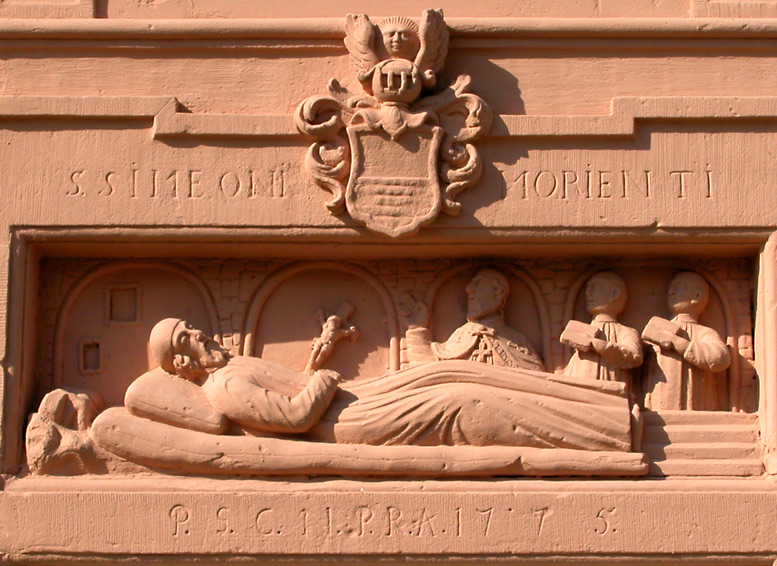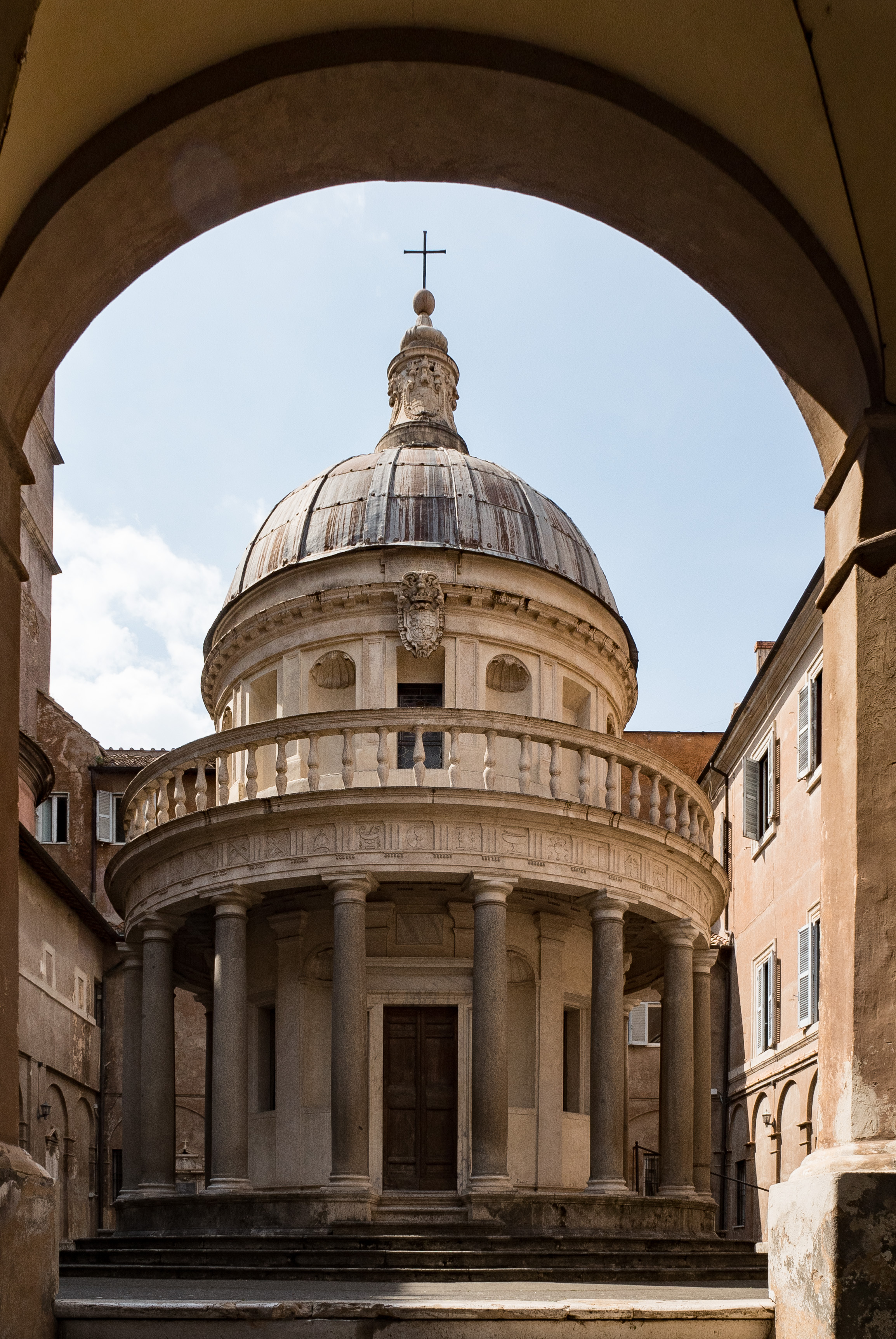|
Bourglinster Castle
Bourglinster Castle (french: Château de Bourglinster) is located in the village of Bourglinster in central Luxembourg some to the east of Luxembourg City. Now housing a restaurant and facilities for business and cultural gatherings, the castle has a history stretching back to the 11th century. History The castle is first mentioned in 1098 as belonging to St Symeon of Trier. At the time it had a residential keep, a chapel and a wall. During the second half of the 14th century, the chapel was extended and a tower was added on the northern side. The lower castle with a moat and two defensive towers was built in the 15th century. Both castles were partly destroyed during the 16th century wars (1542–1544) but were soon repaired and a Renaissance wing was added (1548). Parts of the lower castle were again destroyed by the French in the 1680s. In the early 18th century, a Baroque The Baroque (, ; ) is a style of architecture, music, dance, painting, sculpture, poetry, and oth ... [...More Info...] [...Related Items...] OR: [Wikipedia] [Google] [Baidu] |
Bourglinster
Bourglinster (, ) is a small town in the commune of Junglinster, in central Luxembourg. , the town has a population of 740. The town's 11th century restored Bourglinster Castle Bourglinster Castle (french: Château de Bourglinster) is located in the village of Bourglinster in central Luxembourg some to the east of Luxembourg City. Now housing a restaurant and facilities for business and cultural gatherings, the castle ha ..., with its onsite restaurant, is frequently used as a venue for conferences and cultural events. References Junglinster Towns in Luxembourg {{Grevenmacher-geo-stub ... [...More Info...] [...Related Items...] OR: [Wikipedia] [Google] [Baidu] |
Luxembourg
Luxembourg ( ; lb, Lëtzebuerg ; french: link=no, Luxembourg; german: link=no, Luxemburg), officially the Grand Duchy of Luxembourg, ; french: link=no, Grand-Duché de Luxembourg ; german: link=no, Großherzogtum Luxemburg is a small landlocked country in Western Europe. It borders Belgium to the west and north, Germany to the east, and France to the south. Its capital and most populous city, Luxembourg, is one of the four institutional seats of the European Union (together with Brussels, Frankfurt, and Strasbourg) and the seat of several EU institutions, notably the Court of Justice of the European Union, the highest judicial authority. Luxembourg's culture, people, and languages are highly intertwined with its French culture, French and German culture, German neighbors; while Luxembourgish is legally the only national language of the Luxembourgers, Luxembourgish people, French language, French and German language, German are also used in administrative and judicial ma ... [...More Info...] [...Related Items...] OR: [Wikipedia] [Google] [Baidu] |
Luxembourg (city)
Luxembourg ( lb, Lëtzebuerg; french: Luxembourg; german: Luxemburg), also known as Luxembourg City ( lb, Stad Lëtzebuerg, link=no or ; french: Ville de Luxembourg, link=no; german: Stadt Luxemburg, link=no or ), is the capital city of the Grand Duchy of Luxembourg and the country's most populous commune. Standing at the confluence of the Alzette and Pétrusse rivers in southern Luxembourg, the city lies at the heart of Western Europe, situated by road from Brussels, from Paris, and from Cologne. The city contains Luxembourg Castle, established by the Franks in the Early Middle Ages, around which a settlement developed. , Luxembourg City has a population of 128,514 inhabitants, which is more than three times the population of the country's second most populous commune ( Esch-sur-Alzette). The city's population consists of 160 nationalities. Foreigners represent 70% of the city's population, whilst Luxembourgers represent 30% of the population; the number of foreign-bor ... [...More Info...] [...Related Items...] OR: [Wikipedia] [Google] [Baidu] |
Symeon Of Trier
Saint Simeon of Trier (or of Syracuse), also Symeon ( el, Ὁ Ὅσιος Συμεὼν ὁ Πεντάγλωσσος ὁ Σιναΐτης, scn, San Simeuni di Saraùsa), was a monk and recluse who died in Germany in 1035. He is venerated as a saint in the Eastern Orthodox Church with his feast day on May 1, and in the Catholic Church in Germany. Life Simeon was born in the late 10th century in Syracuse, Sicily,Monks of Ramsgate. "Simeon". ''Book of Saints'' 1921. CatholicSaints.Info. 8 November 2017 to a father and a Calabrian mother, during the period of [...More Info...] [...Related Items...] OR: [Wikipedia] [Google] [Baidu] |
Renaissance Architecture
Renaissance architecture is the European architecture of the period between the early 15th and early 16th centuries in different regions, demonstrating a conscious revival and development of certain elements of ancient Greek and Roman thought and material culture. Stylistically, Renaissance architecture followed Gothic architecture and was succeeded by Baroque architecture. Developed first in Florence, with Filippo Brunelleschi as one of its innovators, the Renaissance style quickly spread to other Italian cities. The style was carried to Spain, France, Germany, England, Russia and other parts of Europe at different dates and with varying degrees of impact. Renaissance style places emphasis on symmetry, proportion, geometry and the regularity of parts, as demonstrated in the architecture of classical antiquity and in particular ancient Roman architecture, of which many examples remained. Orderly arrangements of columns, pilasters and lintels, as well as the use of semici ... [...More Info...] [...Related Items...] OR: [Wikipedia] [Google] [Baidu] |
Baroque Architecture
Baroque architecture is a highly decorative and theatrical style which appeared in Italy in the early 17th century and gradually spread across Europe. It was originally introduced by the Catholic Church, particularly by the Jesuits, as a means to combat the Reformation and the Protestant church with a new architecture that inspired surprise and awe. It reached its peak in the High Baroque (1625–1675), when it was used in churches and palaces in Italy, Spain, Portugal, France, Bavaria and Austria. In the Late Baroque period (1675–1750), it reached as far as Russia and the Spanish and Portuguese colonies in Latin America. About 1730, an even more elaborately decorative variant called Rococo appeared and flourished in Central Europe. Baroque architects took the basic elements of Renaissance architecture, including domes and colonnades, and made them higher, grander, more decorated, and more dramatic. The interior effects were often achieved with the use of '' quadratura ... [...More Info...] [...Related Items...] OR: [Wikipedia] [Google] [Baidu] |
List Of Castles In Luxembourg
By some optimistic estimates, there are as many as 130 castles in Luxembourg but more realistically there are probably just over a hundred, although many of these could be considered large residences or manor houses rather than castles.Evy Friedrich, "Burgen und Schlösser", ''Editions Guy Binsfeld'', Luxembourg. . The present list of castles in Luxembourg runs to about 50 and includes all the well-known fortresses and residential chateaux in the country. Below the main list, there is a sublist mentioning some of the other castles which may be included at a later date. Main list Sublist This is a list of less important castles or castles which are not yet covered by articles in the English Wikipedia. *Belenhaff in Junglinster (converted to a golf course and clubhouse) *Berlaymont Castle in Clervaux (small 12th-century castle rebuilt 1635, now a hotel) *Birtrange Castle near Schieren (privately owned) *Ell Castle near Redange (once a minor fort, now used for agricultural act ... [...More Info...] [...Related Items...] OR: [Wikipedia] [Google] [Baidu] |
Castles In Luxembourg
A castle is a type of fortified structure built during the Middle Ages predominantly by the nobility or royalty and by military orders. Scholars debate the scope of the word ''castle'', but usually consider it to be the private fortified residence of a lord or noble. This is distinct from a palace, which is not fortified; from a fortress, which was not always a residence for royalty or nobility; from a ''pleasance'' which was a walled-in residence for nobility, but not adequately fortified; and from a fortified settlement, which was a public defence – though there are many similarities among these types of construction. Use of the term has varied over time and has also been applied to structures such as hill forts and 19th-20th century homes built to resemble castles. Over the approximately 900 years when genuine castles were built, they took on a great many forms with many different features, although some, such as curtain walls, arrowslits, and portcullises, were ... [...More Info...] [...Related Items...] OR: [Wikipedia] [Google] [Baidu] |
Junglinster
Junglinster ( lb, Jonglënster) is a commune in central Luxembourg, which draws its name from its principal town, Junglinster. It is one of six communes in the Luxembourg canton of Grevenmacher. The 18th-century St Martin's church is a national monument. History The oldest mention of ''Lincera'' (the "linster" part of the place name) is in documents going back to 983, with the status of parish first attested in 1128. Population , the town of Junglinster has a population of 3,254, whilst the wider commune of Junglinster has a population of 7,621. Figures from the same year report that 64.11% of the population of the commune holds Luxembourgish nationality, with the five largest immigrant populations in the commune being those of Portuguese (7.77%), French (5.12%), German (3.88%), Belgian (3.27%) and British (1.91%) nationalities. Transmitters The commune hosts two of the world's most powerful longwave transmitters, with the older transmitter based just north of the town of J ... [...More Info...] [...Related Items...] OR: [Wikipedia] [Google] [Baidu] |
Hotels In Luxembourg
A hotel is an establishment that provides paid lodging on a short-term basis. Facilities provided inside a hotel room may range from a modest-quality mattress in a small room to large suites with bigger, higher-quality beds, a dresser, a refrigerator and other kitchen facilities, upholstered chairs, a flat screen television, and en-suite bathrooms. Small, lower-priced hotels may offer only the most basic guest services and facilities. Larger, higher-priced hotels may provide additional guest facilities such as a swimming pool, business centre (with computers, printers, and other office equipment), childcare, conference and event facilities, tennis or basketball courts, gymnasium, restaurants, day spa, and social function services. Hotel rooms are usually numbered (or named in some smaller hotels and B&Bs) to allow guests to identify their room. Some boutique, high-end hotels have custom decorated rooms. Some hotels offer meals as part of a room and board arrangement. In Jap ... [...More Info...] [...Related Items...] OR: [Wikipedia] [Google] [Baidu] |






